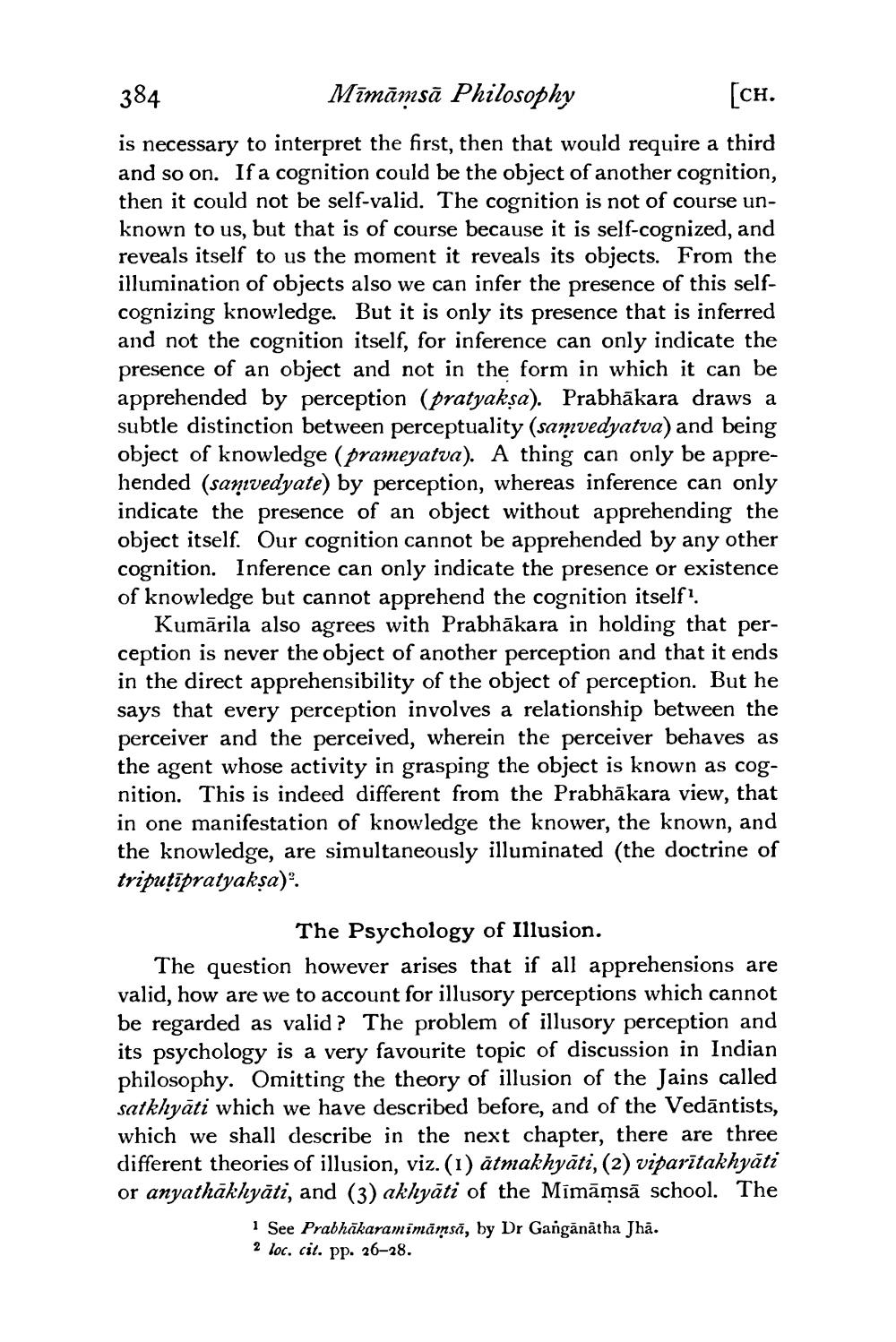________________
384 Mīmāmsā Philosophy
[Ch. is necessary to interpret the first, then that would require a third and so on. If a cognition could be the object of another cognition, then it could not be self-valid. The cognition is not of course unknown to us, but that is of course because it is self-cognized, and reveals itself to us the moment it reveals its objects. From the illumination of objects also we can infer the presence of this selfcognizing knowledge. But it is only its presence that is inferred and not the cognition itself, for inference can only indicate the presence of an object and not in the form in which it can be apprehended by perception (pratyakşa). Prabhākara draws a subtle distinction between perceptuality (samvedyatva) and being object of knowledge (prameyatva). A thing can only be apprehended (sanıvedyate) by perception, whereas inference can only indicate the presence of an object without apprehending the object itself. Our cognition cannot be apprehended by any other cognition. Inference can only indicate the presence or existence of knowledge but cannot apprehend the cognition itself.
Kumārila also agrees with Prabhākara in holding that perception is never the object of another perception and that it ends in the direct apprehensibility of the object of perception. But he says that every perception involves a relationship between the perceiver and the perceived, wherein the perceiver behaves as the agent whose activity in grasping the object is known as cognition. This is indeed different from the Prabhākara view, that in one manifestation of knowledge the knower, the known, and the knowledge, are simultaneously illuminated (the doctrine of triputīpratyakşa)".
The Psychology of Illusion. The question however arises that if all apprehensions are valid, how are we to account for illusory perceptions which cannot be regarded as valid? The problem of illusory perception and its psychology is a very favourite topic of discussion in Indian philosophy. Omitting the theory of illusion of the Jains called satkhyāti which we have described before, and of the Vedāntists, which we shall describe in the next chapter, there are three different theories of illusion, viz. (1) ātmakhyāti, (2) viparītakhyāti or anyathākhyāti, and (3) akhyāti of the Mimāmsā school. The
i See Prabhākaramināmsā, by Dr Gangānātha Jhā. 2 loc. cit. pp. 26-28.




